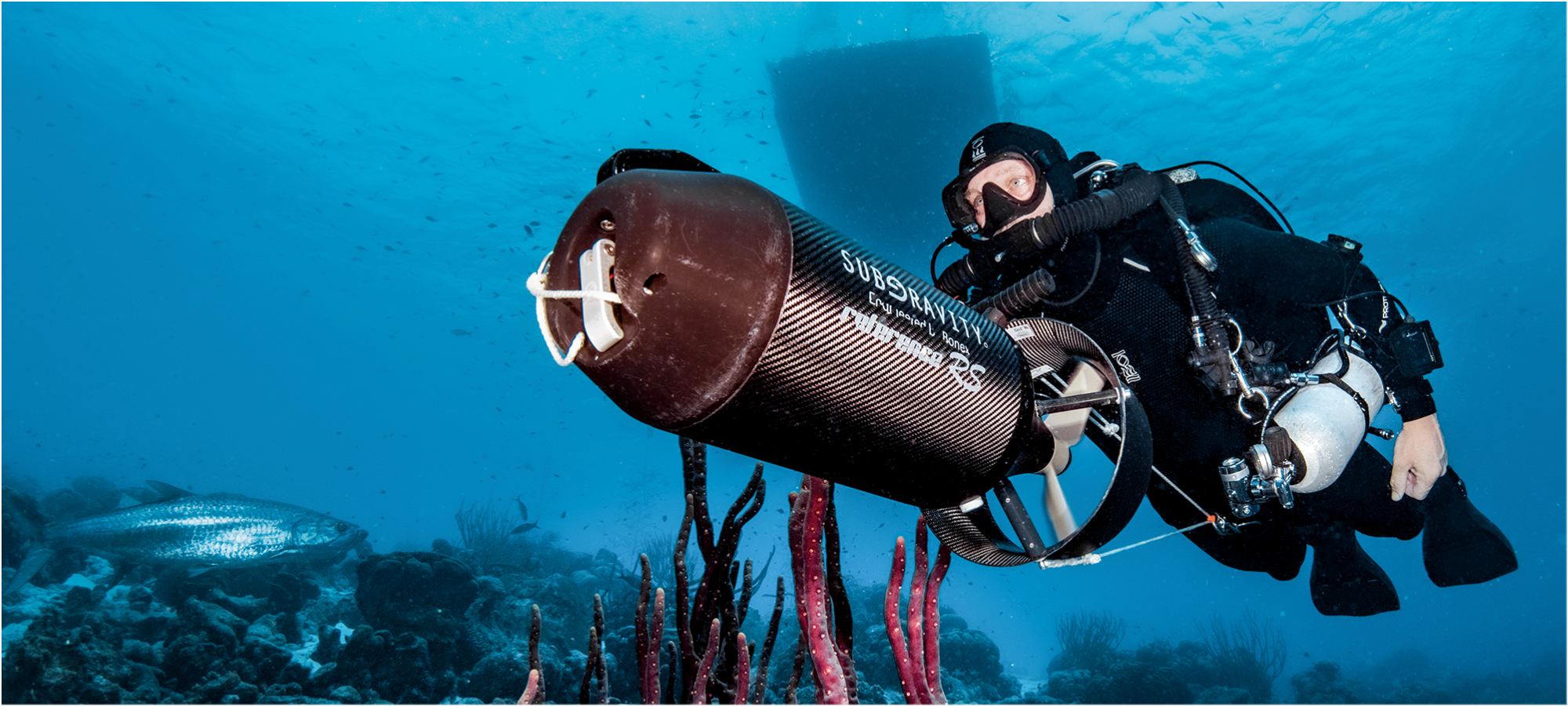How to Take Your Bonaire Dive Trip to the Next Level
Ahead, I see only white. Rolls of churning water crash into my mask and my body. The chaos has stirred up millions of tiny bubbles that obscure anything ahead. I keep kicking—I’ve just walked, waded and swum too far to miss out on diving Turtle City, one of Bonaire’s more challenging shore dives on the east coast, and the one that every dive instructor I talk to says is his favorite. Sure, I could abort, but no. I grab onto the tank valve of my guide and keep kicking. Besides, this is what I came to do. Bonaire is largely known for relaxing dives among picture-perfect coral reefs, but surely there’s more to it than that. I’m on island for a week to see if I can’t find a dialed-up, next-level Bonaire—one that’s more challenging, more intense and, yes, more rewarding.
Need For Speed
It had started four days prior at Buddy Dive Resort’s house reef. The site itself is gentle, both in its mildly sloping topography and conditions—we’re talking visibility of 90 feet and greater, and almost no noticeable current.
But Luc Morinière, a Buddy Dive Master Scuba Diver Trainer and my guide on day one, promises me speed. He readies a pair of SubGravity diver propulsion vehicles from the rental fleet. Our plan: Drop in for a high-speed cruise from the house reef to however far our air supply allows.
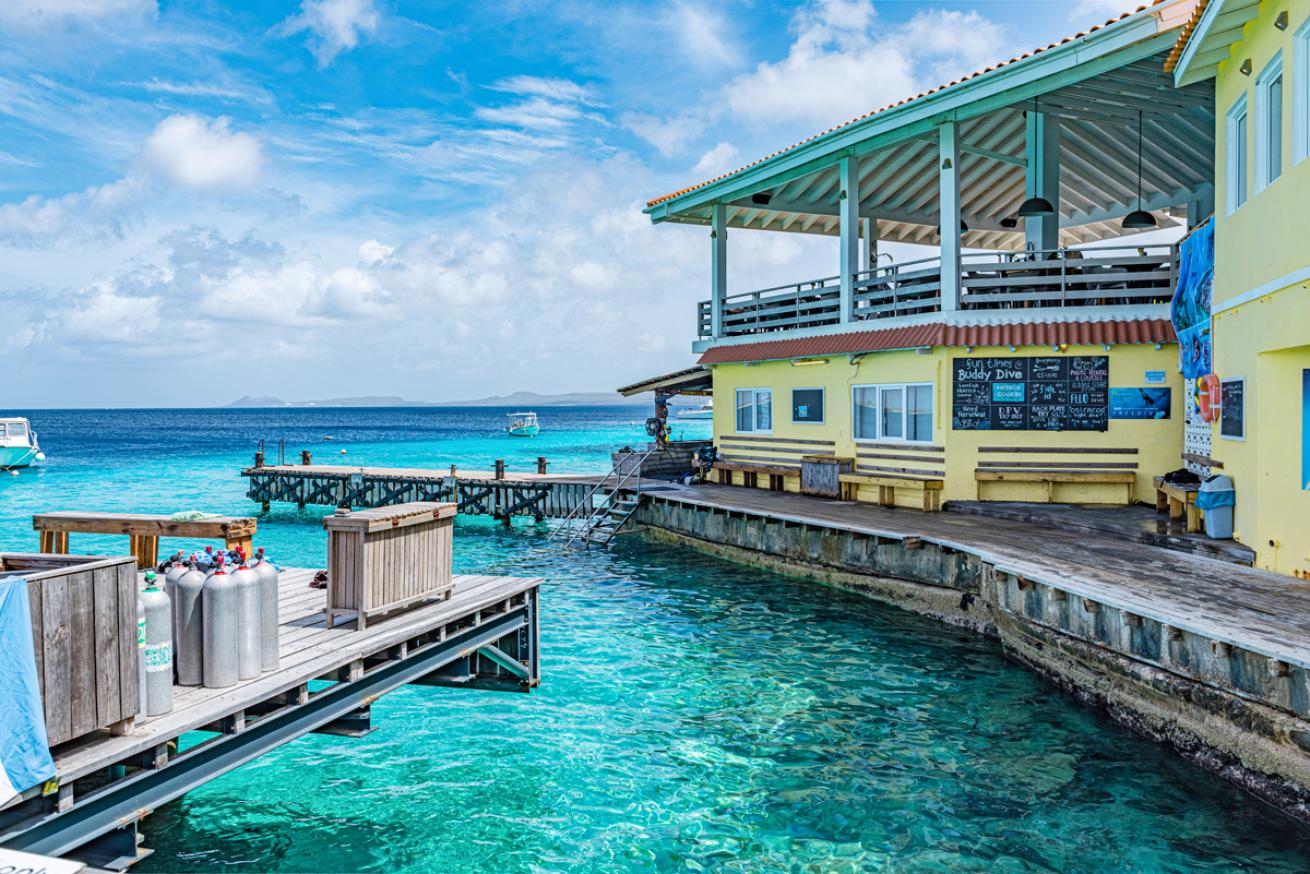
Lorenzo MittigaBuddy Dive Resort.
In we go.
Once we get neutral at about 15 feet, I flick the DPV on and start adjusting the speed to see what feels good as we set off.
Fast. Fast feels good.
My body starts waving like a windsock in the prop wash of this compact, speedy torpedo. I’m laughing, loving it. At one point, I look up and realize we are racing a tuna—and I think we are winning.
Suddenly I’m glad I had been paying attention when Morinière had mentioned that these DPVs come with a screw-in device that locks in your speed. A cruise control, if you will. At the time, I thought I would be scared to lock myself into a high gear.
Nope. At about 20 minutes in, my thumb is tired from trying to dial up the juice. I lock it in and away we go.
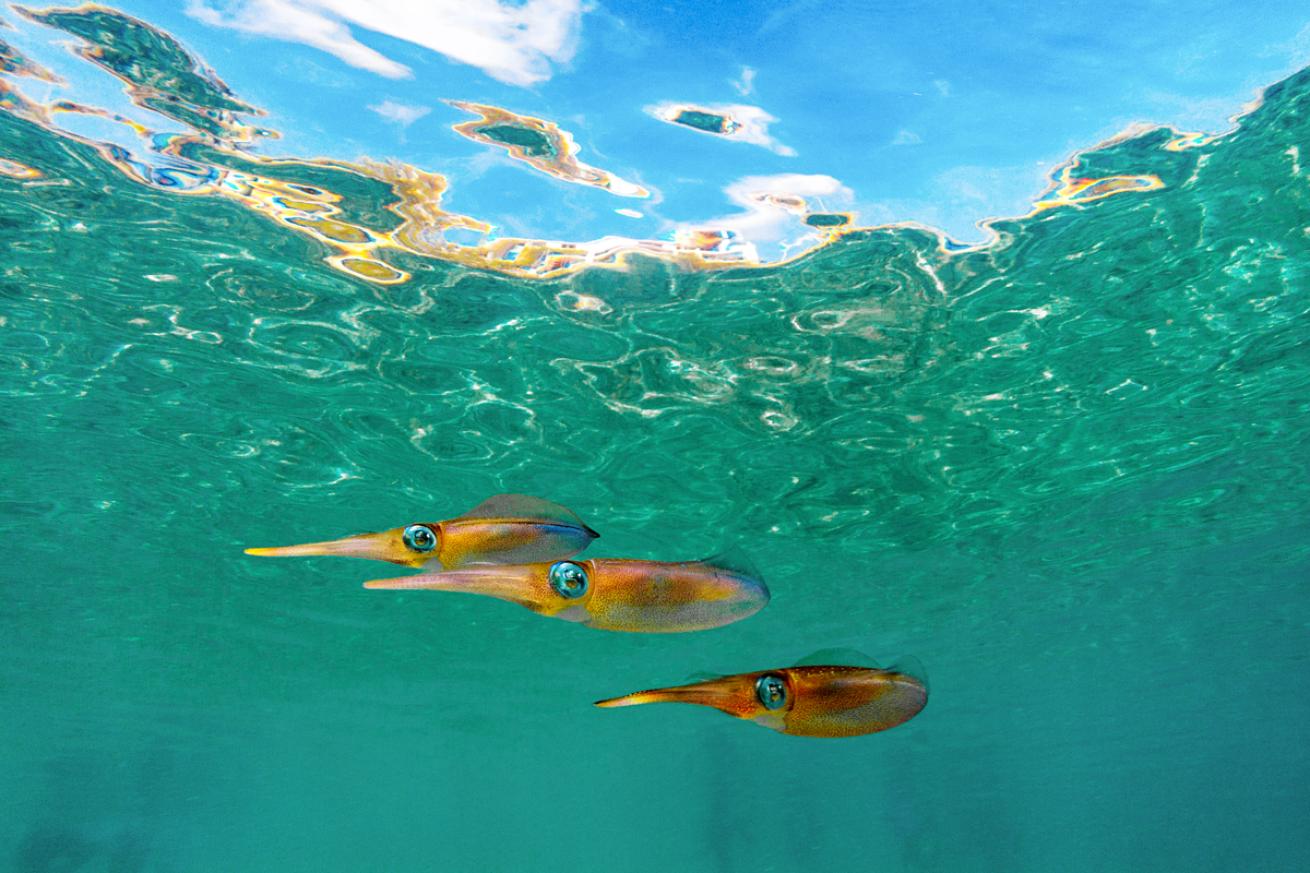
Lorenzo MittigaCaribbean reef squid on Buddy Dive’s house reef.
We’re cruising along a gently sloping wall, past brain coral boulders, soft corals and sand channels, when we come across a wreck with a cloud of baitfish and six horse-eye jacks corralling them into different shapes. We ease the speed down to a stop. The fish don’t flinch, so I nose in and slowly turn on the DPV again, carving tiny, tight circles among their ranks.
Being in the middle of a fish school is my happy place, and this takes the experience up a notch, no doubt.
We’ve turned around and are heading back to Buddy Dive, cruising along at about 70 feet of depth, when I catch a glimpse of the surface, mesmerized. I look up, not thinking about the fact that the DPV follows the path of your eyes.
Only when my dive computer sounds the alert do I realize I have just committed the cardinal sin and begun to ascend too quickly. Luckily, I correct immediately, my reverie temporarily halted.
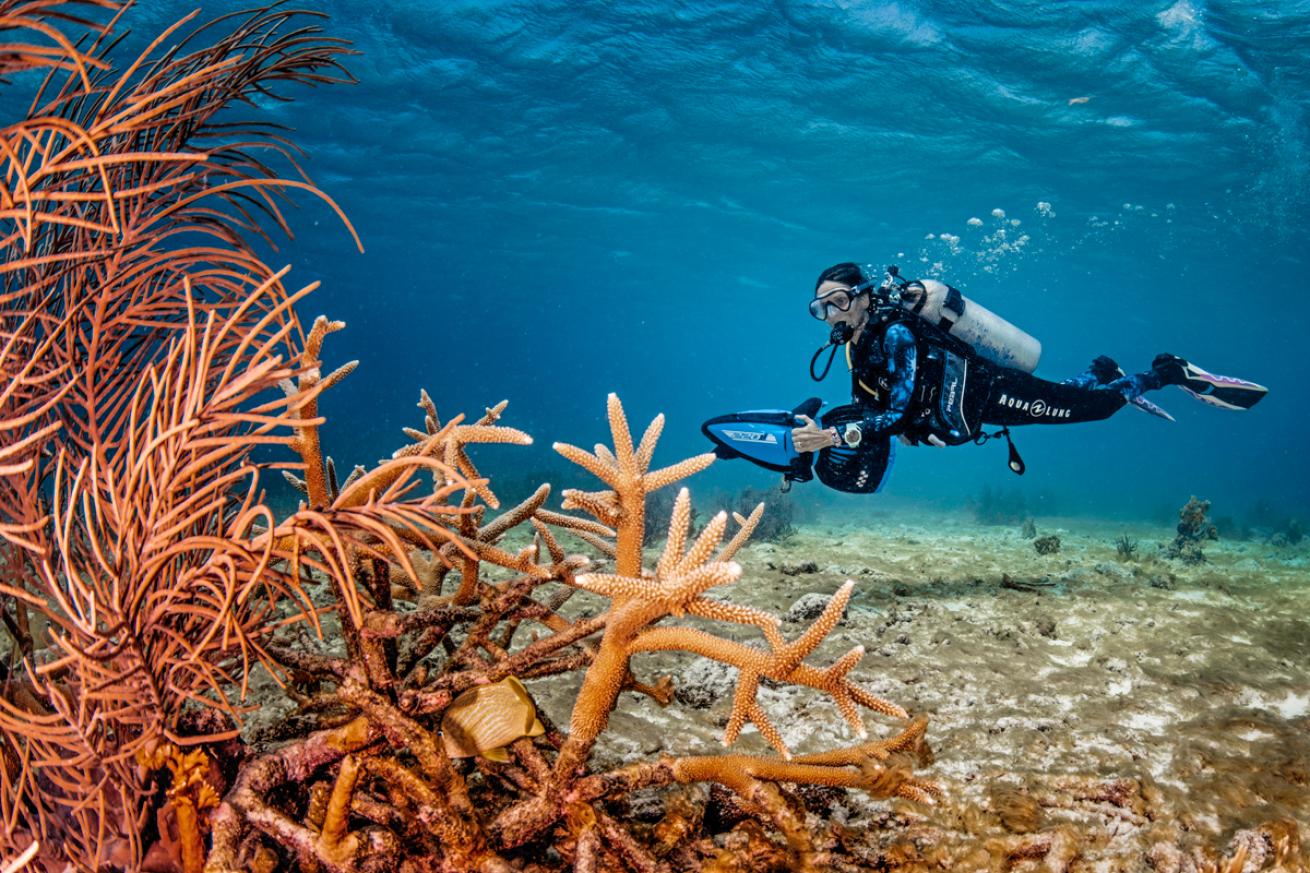
Lorenzo MittigaA diver jets past corals on a DPV.
Continuing back, we jet past a few groups of divers. Some stop and stare. A few forget, I think, what a wave means and signal oversize hellos in our direction. I flash a peace sign.
I find out from Morinière back on dry land that we covered at least a mile to the harbor, so 2 miles round-trip. I’m proud for a moment—until I remember the scooters did all the work.
Rough Side
“I need to show you something,” says Ronald van Meerten, of VIP Diving, as we suit up to dive Boca Spelonk on Bonaire’s east side.
I’m already nervous on my second day of diving. Yes, I had slept heavenly in my room at Plaza Beach & Dive Resort, just south of the main city of Kralendijk. But we’ve just driven 20 minutes on dirt roads leading away from the town to reach this ironshore coast—and the start of this dive. It’s this level of remoteness that makes me afraid if anything goes wrong. But it’s also what makes for sublime diving, away from crowds—which means the chances of seeing big stuff are, well, bigger.
Van Meerten reaches into a dry box and shows me the emergency cellphone that they keep locked up, unlike the car, which stays unlocked in case any petty thieves fancy our towels and flip-flops.
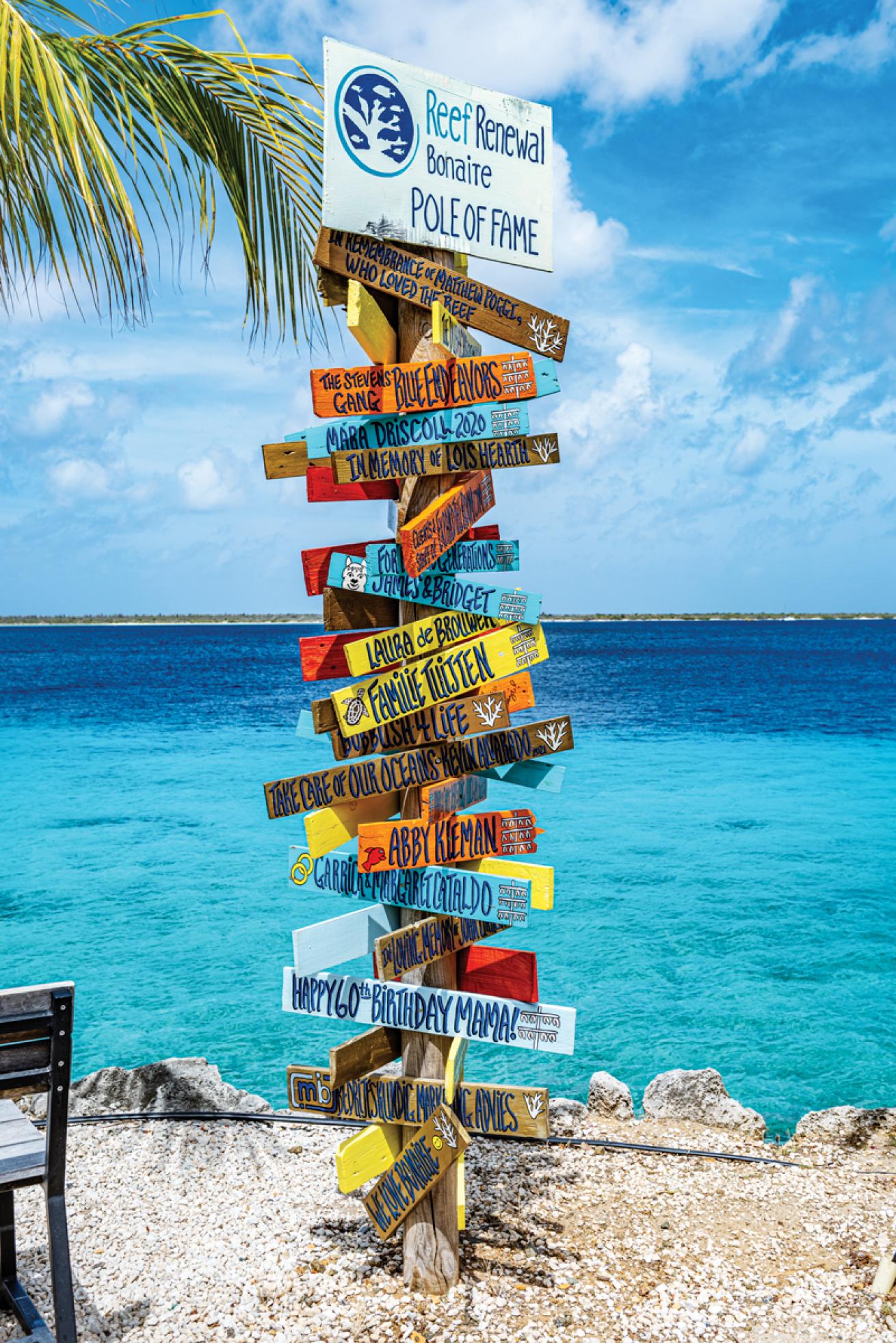
Lorenzo MittigaPeople who adopt a coral nursery tree get a hand-painted sign on the Reef Renewal Bonaire Pole of Fame.
I think immediately of Chekhov’s gun—that is, the literary rule that any gun introduced in a dramatic work is going to go off later on in the story. I know that for safety reasons, van Meerten needs me to be briefed on procedure, but now I fear that merely talking about worst-case scenarios, such as slipping on the sharp shoreline and splitting open a shin, will increase the odds of that happening and actually needing this emergency cellphone.
I swallow that thought.
I size up my dive partner, Gerard, an intellectual properties lawyer from the U.K. Smart. Fit. I’m probably the most likely to be a liability in the group given my pandemic penchant for donuts.
Onward.
The entry is covered in algae—an algae more crunchy than slimy, so slipping isn’t an issue. At worst I might be persuaded by a wave to plant a hand down, possibly on an urchin.
We negotiate the steps down, and toss our bodies into the blue. Descending takes us into a garden of sea fans, purple and blue and waving insistently, like traffic cops hopped up on too much coffee.
The protected cove leads to a wall. Here, the first 90 feet is sheer. Then a gentle slope, covered in massive plate corals. The whole scene is majestic. There’s something compelling about how varied the terrain is, from the cove to the wall to the cave mouth we poke around in, finding a fleet of lobsters tucked in the rock folds. It’s undeniably beautiful. Stately, and well worth the trek.
Van Meerten tells me later that the plate corals there spread horizontally, trying to grasp as much light as possible at the deeper depths. It seems that some corals, like some divers, aren’t always content to stay put in the shallows.
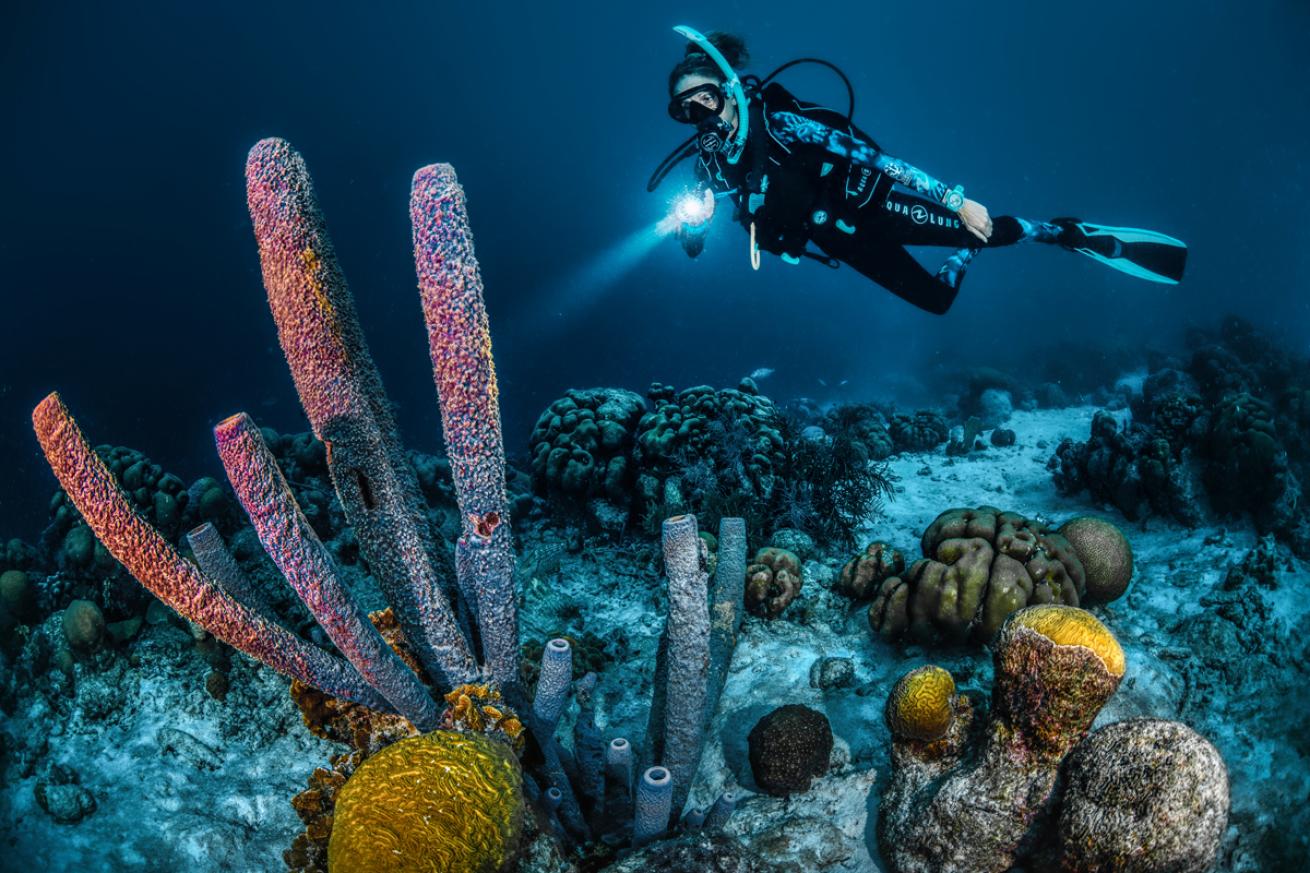
Lorenzo MittigaA diver illuminates purple stove-pipe sponges (Aplysina archeri) on a reef. These tube sponges, common on Bonaire’s drop-offs, can grow 5 feet high and 3 inches thick.
Lightening Strikes
No one wants to make a decision. Van Meerten has just tasked us with choosing a second dive for the day. He tells us that Turtle City is his favorite on the island, but it requires a 15-minute walk and a 10-minute swim to reach the starting point.
These numbers double if you dally.
He tells us also of Lac Cai, an easy swim with plenty of highlights.
Gerard and I decide we want the full monty, so we head for Turtle City. But as we suit up, van Meerten’s face drops. I see worry, and wheels turning. He’s visibly torn—eager to give us what we want but also to keep us safe from the black clouds and lightning inching toward us.
I ask him what he thinks.
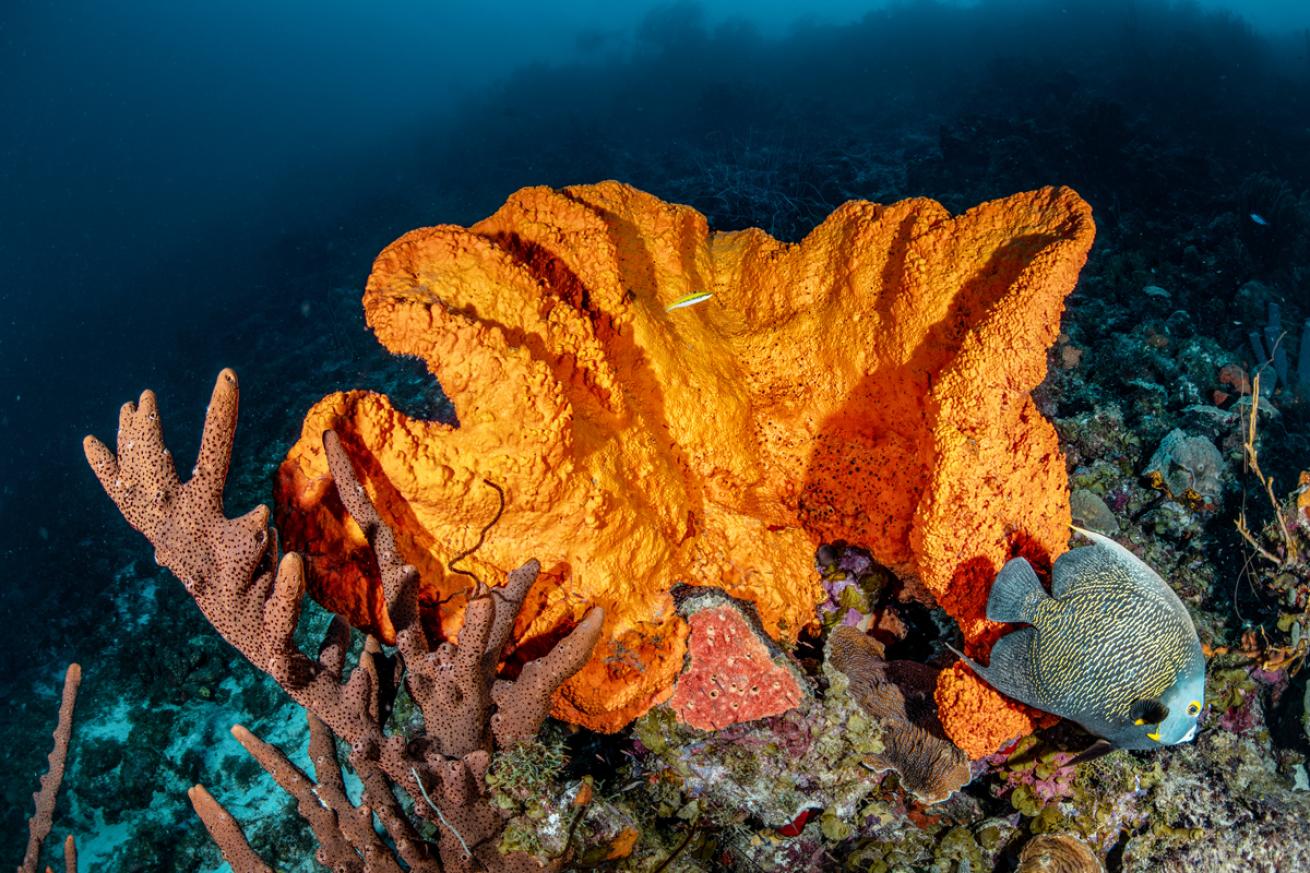
Lorenzo MittigaA French angelfish on an elephant ear sponge.
Out it tumbles: “I don’t like the look of those clouds. And the wind is really picking up.”
Good news for the windsurfers 100 yards away. Less good for us.
Should we call it?
With that, we hop back in the car for Lac Cai. Two older men with telescoping lenses have set up in the parking lot to photograph the frigate birds.
Here, the walk in is easy. Just a couple of yards, then we drop down. Visibility is no more than 40 feet because we’re outside the harbor.
Then a flash. A dozen glints of silver. Tarpon, fat as logs, are stacked up in the current. Every time I swim closer, the visibility opens up to reveal a few more. I put the final count at 30.
Then, along the wall we go.
A minute passes and van Meerten flaps his arms. If he just saw a manta, I’m going to be disappointed because I see no such animal.
As we swim, a tarpon, though seemingly motionless, stays ahead of us by a few feet even as we cover more and more ground. Past green morays. Past a green turtle long in the tooth.
The white fizz is relentless, but my curiosity won’t let me swim in any direction but forward and down. This is the feather in the cap of Bonaire East Coast Diving.
Then it comes from underneath. A young eagle ray beats out, hurrying forward, his back a pattern of perfect Os.
A few minutes of drifting, and then it returns, swimming toward us and arcing round as it nears. We turn, meeting two more gliding in our direction, their wings curled up at their sides to resemble one of those Imperial starfighters from Star Wars.
Out of the water, I ask van Meerten about mantas. What would he have signed if he had seen one?
“It’s the same,” he says. “I see about one a year, no more than that really.”
Good thing he only sees them once a year or he’d have to learn more signs.
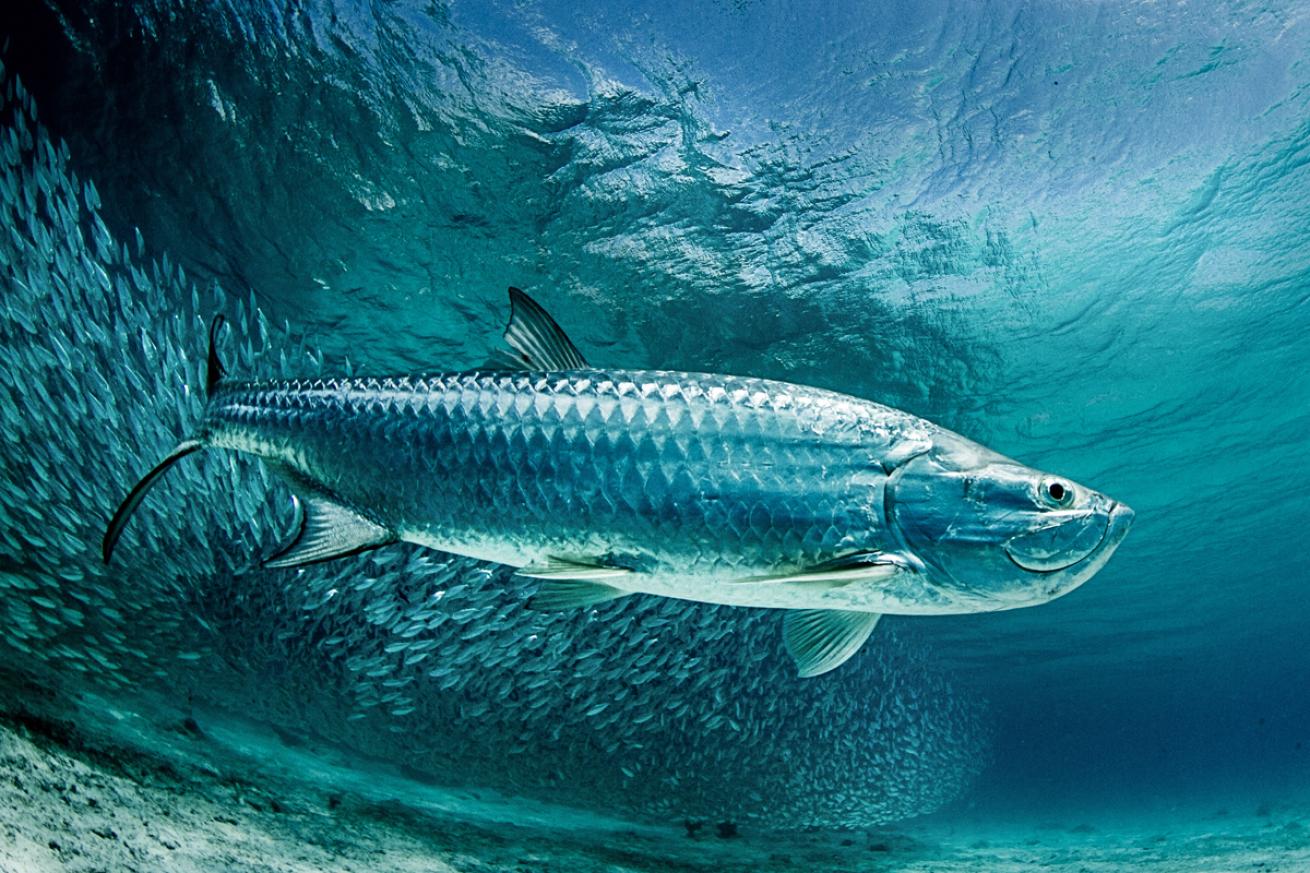
Lorenzo MittigaA tarpon in shallow water.
Whiteout
I’m powering through a washing-machine effect, getting knocked back a bit with every wave cycle. The white fizz is relentless, but my curiosity won’t let me swim in any direction but forward and down. This is, so they say, the feather in the cap of Bonaire east coast diving.
Granted, every sign that led up to Turtle City might deter the uninitiated. The dive site itself is a 15-minute walk from where you park your car. Divers suit up, then negotiate a salt pond near Lac Baai, a stretch of beach famous for windsurfing. The water is just a few inches deep, but the bottom here is uneven, like an egg crate of alternating mounds and dips.
Then there’s the cross, always a cheery omen, marking the bit of beach where we entered the water. Or the white crests of the waves, breaking just a couple of yards from the stone-covered shore—forcing divers to be speedy, balanced and well-practiced when donning gear while duck-diving under the waves.
But perhaps it’s all for good reason that these sites don’t call out to most divers. In fact, sites such as Turtle City and Boca Spelonk aren’t on most dive maps, for all the aforementioned reasons. They’re best taken on with the help of the pros who have local knowledge.
People like Maarten van den Hazel, a course director from Buddy Dive and the diver whose tank valve I’m currently attached to. On his days off, van den Hazel had sought out shore diving this side of the island to challenge himself—and had gotten hooked. He and another Buddy Dive instructor have made it their personal mission to get more Bonaire visitors to go east and see what it’s all about.
Now here we are.
Everything around me is white, save for the brown garlands of sargassum algae getting caught up in the mix.
But then I see purple. Ahhh. A garden of sea fans.
Just as I catch my breath, a 5-foot reef shark whizzes past.
We drop to the bottom among the wide expanse of sea fans. They part to reveal the drop-off where we descend further to 50 feet. I see a trickle of bubbles and am shocked that anyone else is out here. Then a pair of tarpon edges toward us, and I realize the fish are the ones that exhaled.
Before we had jumped in, van den Hazel told me my one job was to count turtles. We’re about 20 minutes into the dive, and we haven’t seen one. I start thinking about what I will say to make him feel better since his promised turtles are a no-show.
But then I see that pine-cone-like pattern, brown bleeding into beige, and I’m happy we found one, its head and half its body tucked under a ledge and its bum and tail exposed. Not another minute passes before another lifts up from behind bending sea fans.
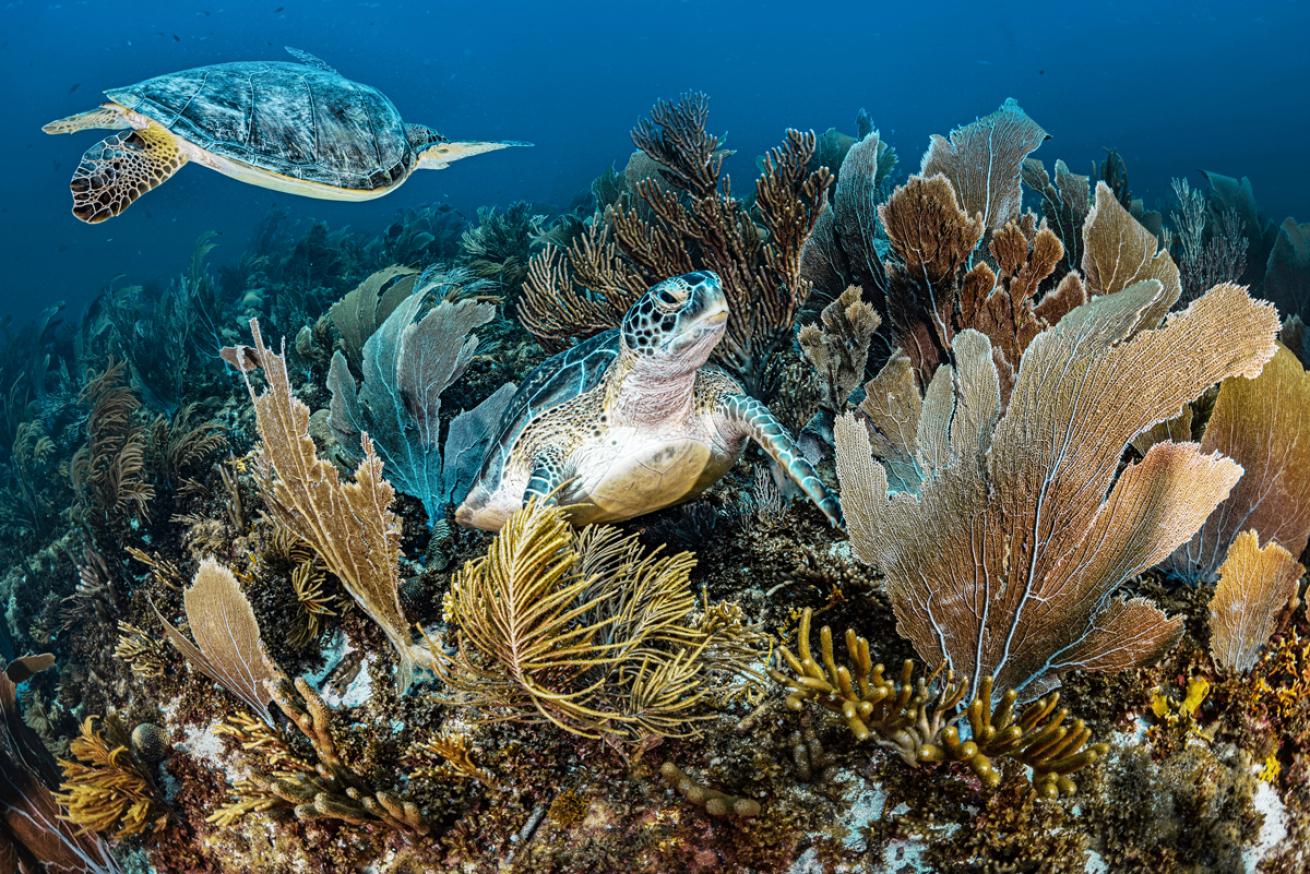
Lorenzo MittigaA pair of name-sake residents at Bonaire’s Turtle City.
Suddenly they are everywhere, climbing to the surface to breathe. We stay still on the bottom while their eyes track us from overhead. I count 30, 35, but forget to count when the eagle rays join us. A fever of four seems to beeline closer, then starts circling.
Meanwhile, the turtles around us continue to grow in number, bobbing their heads up from the sea fans and soft corals they had sought sanctuary behind. Everywhere is movement. It feels like the Fourth of July when the pyrotechnicians start setting every last trick ablaze to make the best show possible.
I get it now. I see why van den Hazel and others preach the gospel of the east, and I’d be lying if I called myself anything but a true believer.
Need to Know
When To Go: There is no bad time to dive Bonaire. December to April is peak tourist season, when conditions are most pleasant. Winds are highest May through August, which means bigger waves on the east coast—so if you plan to shore dive the east, it’s best to travel outside of summer.
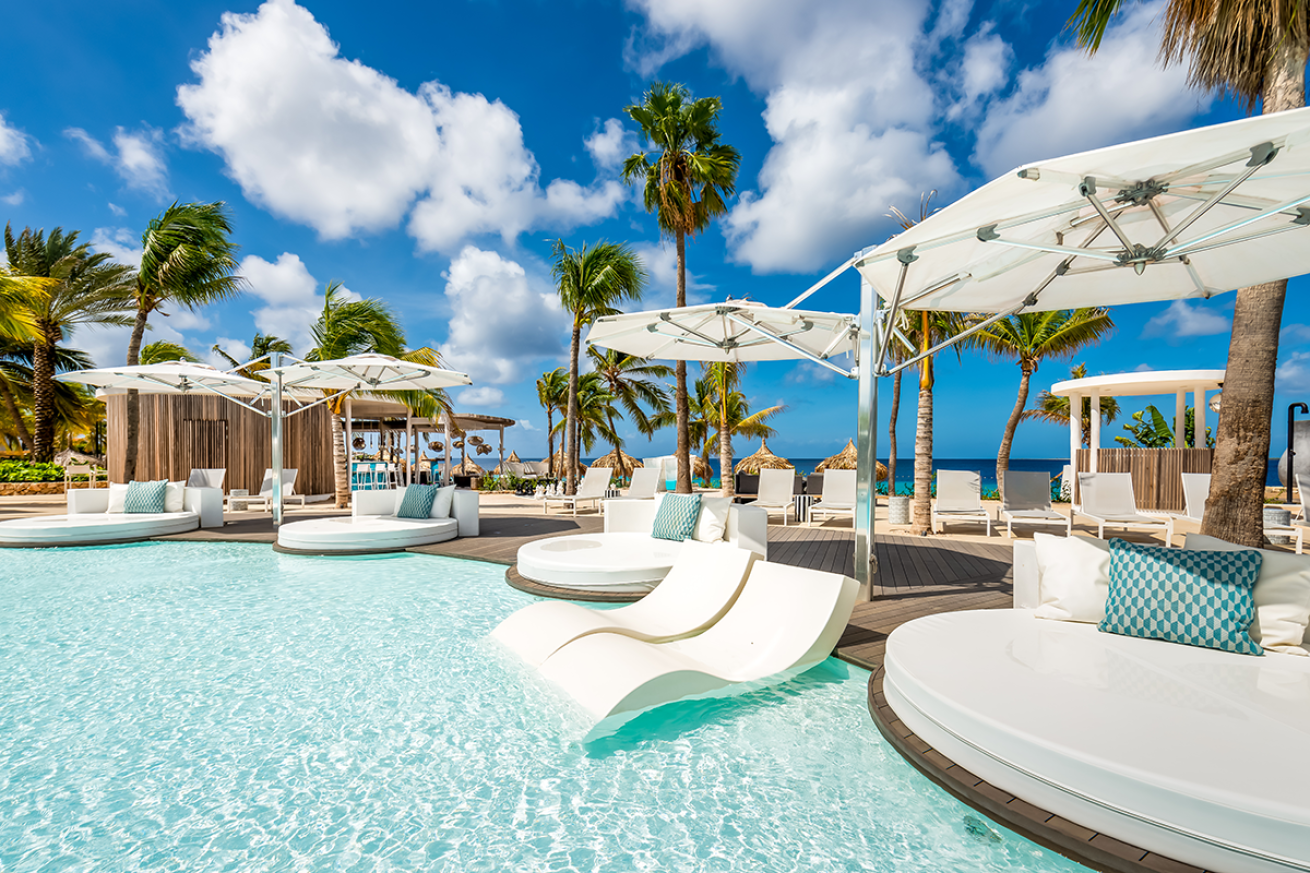
Courtesy ImagePlaza Beach & Dive Resort pool.
Dive Conditions: Water temperatures stay within a range of 79 to 84 degrees. In-water visibility can be between 60 and 100 feet, depending on location.
Operators: Buddy Dive Resort; Toucan Diving Bonaire; VIP Diving
Where To Stay: Buddy Dive Resort can’t be beat in terms of proximity to the water’s edge. Its gear lockers, boat dock and circular drive are all in one compact lineup, making for easy access—no schlepping required. Plaza Beach & Dive Resort, favored by the Dutch, shines for its sprawling white-sand beach, where drink and food service is offered so guests can enjoy fish sandwiches, burgers, daiquiris and coffee drinks all without leaving their lounge chairs.
Take Your Skills to the Next Level with these Specialty Courses on Bonaire
Lionfish Removal Specialist
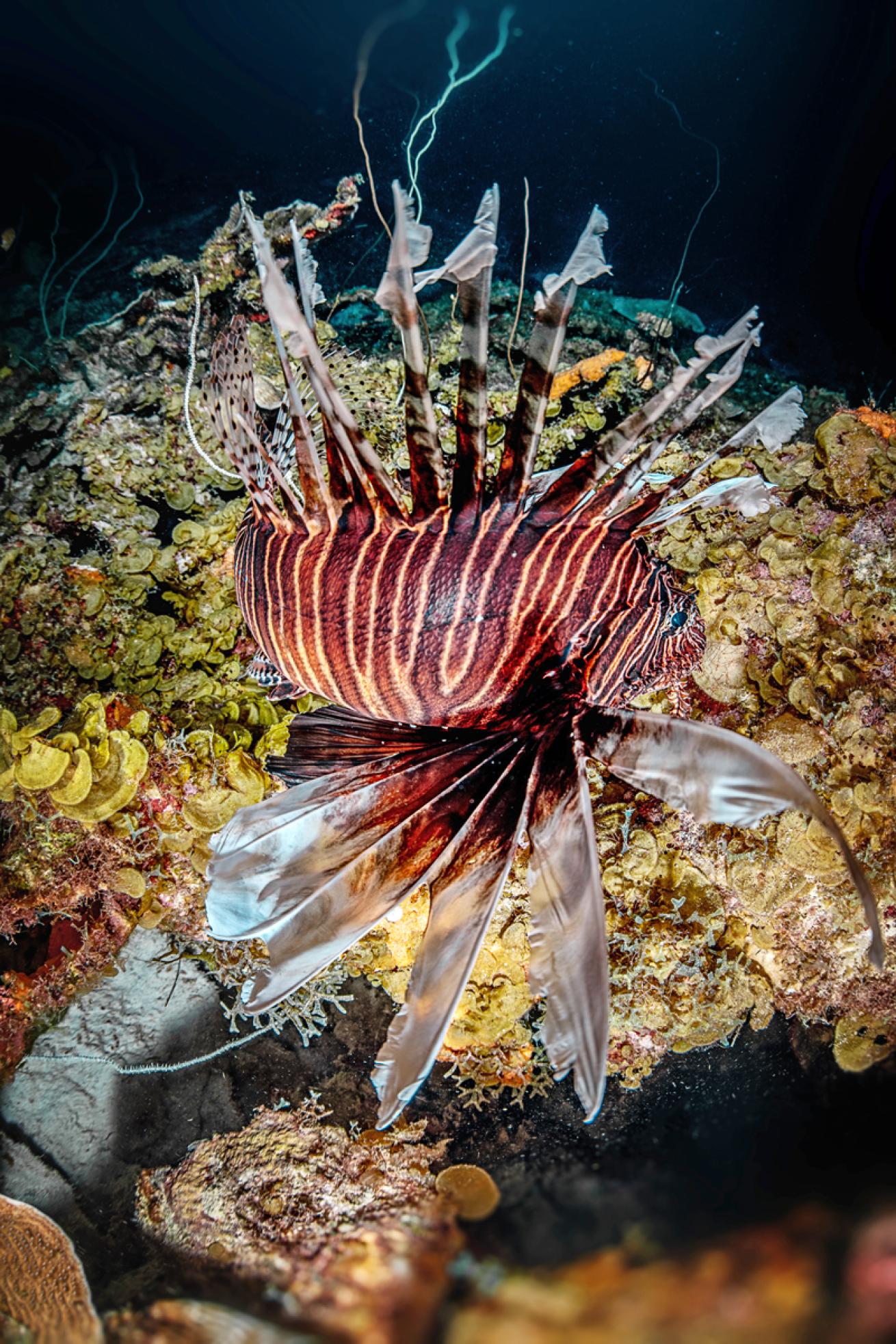
Lorenzo MittigaLionfish are an invasive species on Bonaire.
This half-day, two-dive course teaches the safe and proper way to use a spear and handle a ZooKeeper lionfish collection device. The ZooKeeper can cause a lot of drag, and it requires practice to become comfortable with it. Students first learn to shoot on dry land so they have some familiarity before entering the water. “Divers tend to overestimate their shooting ability,” says Laurens Hendriksen, specialty instructor with Toucan Diving. “They say that we make it look easy, but they’re forgetting that we’ve been doing this for years.”
DPV Underwater Scooter
This two-dive course teaches students techniques for properly handling scooters, including how to steer and manage your dive while adding in this new device. Most of all, the course is designed to build diver comfort with the equipment. Buddy Dive and most other scuba centers offering the specialty have the DPVs set up with a tow rope of sorts that extends behind the DPV. Divers clip themselves into this tow rope—which is the easy part. Then comes fine-tuning buoyancy and adjusting the rope just so, in order to have a safe, smooth ride.
Reef Renewal
Several operators on Bonaire offer this hands-on, day-and-a-half certification that informs divers about the coral regrowing process. You’ll learn how to propagate new corals in the nursery, maintain and care for the growing corals, and plant corals onto the reef where you can come back and see them on future dives.

